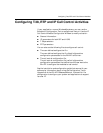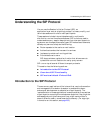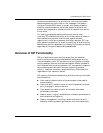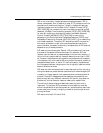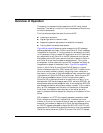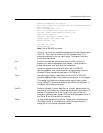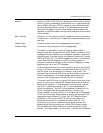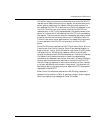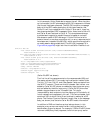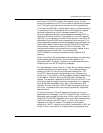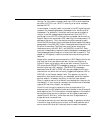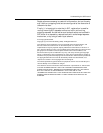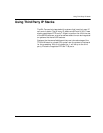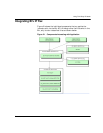
Understanding the SIP Protocol
November 2009 250
Contact Contains a SIP or SIPS URI that represents a direct route to contact
Caller A, usually composed of a username at a fully qualified domain
name (FQDN). While an FQDN is preferred, many end systems do
not have registered domain names, so IP addresses are permitted.
While the Via header field tells other elements where to send the
response, the Contact header field tells other elements where to send
future requests.
Max-Forwards Serves to limit the number of hops a request can make on the way to
its destination. It consists of an integer that is decremented by one at
each hop.
Content-Type Contains a description of the message body (not shown).
Content-Length Contains an octet (byte) count of the message body.
The details of the session, such as the type of media, codec, or
sampling rate, are not described using SIP. Rather, the body of a SIP
message contains a description of the session, encoded in some other
protocol format. One such format is the Session Description Protocol
(SDP) (RFC 2327 [1]). This SDP message (not shown in the example)
is carried by the SIP message in a way that is analogous to a
document attachment being carried by an email message, or a web
page being carried in an HTTP message.
Since the softphone does not know the location of Caller B or the SIP
server in the biloxi.com domain, the softphone sends the INVITE to
the SIP server that serves Caller A's domain, atlanta.com. The
address of the atlanta.com SIP server could have been configured in
Caller A's softphone, or it could have been discovered by the
Dynamic Host Configuration Protocol (DHCP), for example.
The atlanta.com SIP server is a type of SIP server known as a proxy
server. A proxy server receives SIP requests and forwards them on
behalf of the requestor. In this example, the proxy server receives
the INVITE request and sends a 100 (Trying) response back to
Caller A's softphone. The 100 (Trying) response indicates that the
INVITE has been received and that the proxy is working on
Caller A’s behalf to route the INVITE to the destination. Responses
in SIP use a three-digit code followed by a descriptive phrase. This
response contains the same To, From, Call-ID, CSeq and branch
parameter in the Via as the INVITE, which allows Caller A's
softphone to correlate this response to the sent INVITE. The
atlanta.com proxy server locates the proxy server at biloxi.com,
possibly by performing a particular type of DNS (Domain Name
Service) lookup to find the SIP server that serves the biloxi.com
domain. This is described in [4]. As a result, it obtains the IP address



